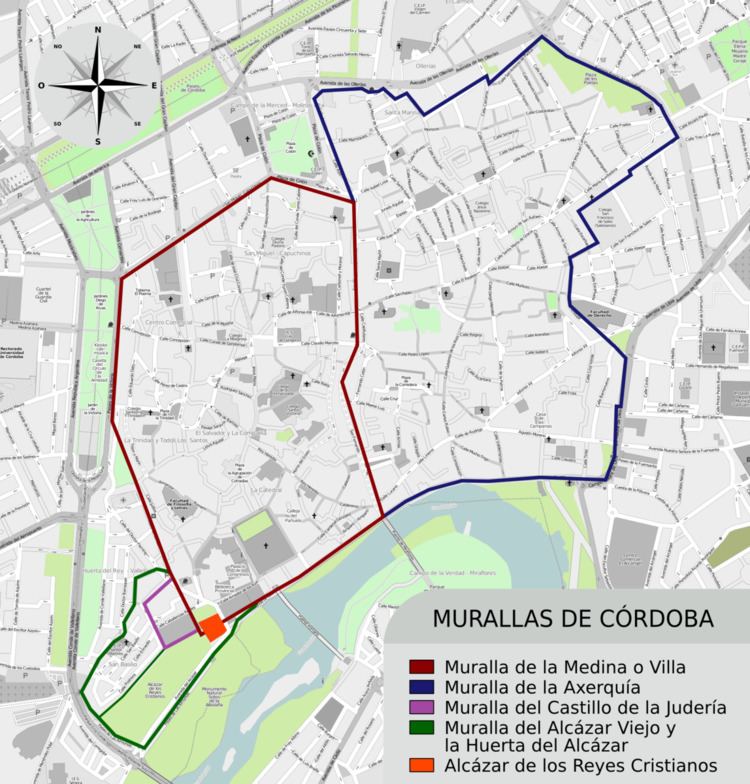 | ||
The Roman Walls which once surrounded Córdoba, Spain, were built after the Romans captured the city in 206 BC, making it part of the Roman Republic. The walls now form part of the historic centre of Córdoba, a UNESCO World Heritage site.
Description
Built as fortifications soon after the Romans captured Córdoba, the walls stretched some 2,650 m (8,690 ft), completely surrounding the city. They consisted of carefully cut stone with an outer wall of up to 3 m (9.8 ft) high and a 1.2 m (3 ft 11 in) inner wall flanking a gap 6 m (20 ft) wide filled with rubble. There were several semicircular towers along the walls. When the city received the status of Colonia Patricia under Augustus, the southern wall was demolished in order to extend the city limits to the river. Vestiges remain in the Alcázar, near the Roman bridge, and flanking the Avenida de la Ribera. The walls next to Calle San Fernando and Calle Cairuán (restored in the 1950s) also have a base from this period. A section of the Roman wall can be seen from the street next to the Roman temple
Roman gates included the Porta Principalis Sinistra (later Puerta de Gallegos) on the west side not far from the Roman mausoleum. The arches next to the Puerta de Sevilla to the east are part of a Roman aqueduct.
